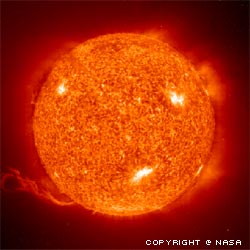Doodling Shake Bot DIY STEM Kit
$9.99$4.95
 Stars are balls of gas that have condensed from large diffuse clouds of material due to gravity. Presumably after the big bang, large clouds of hydrogen would have been dispersed throughout the universe, and local pockets of higher density would have condensed into the first stars.
Stars are balls of gas that have condensed from large diffuse clouds of material due to gravity. Presumably after the big bang, large clouds of hydrogen would have been dispersed throughout the universe, and local pockets of higher density would have condensed into the first stars.
 'As long as men are free to ask what they must; free to say what they think; free to think what they will; freedom can never be lost and science can never regress. '
'As long as men are free to ask what they must; free to say what they think; free to think what they will; freedom can never be lost and science can never regress. '